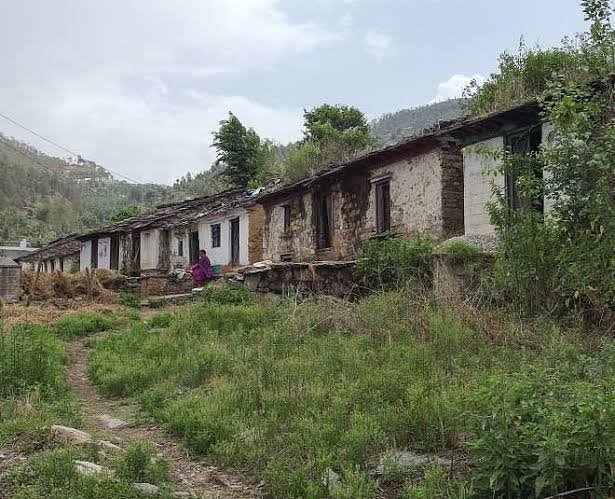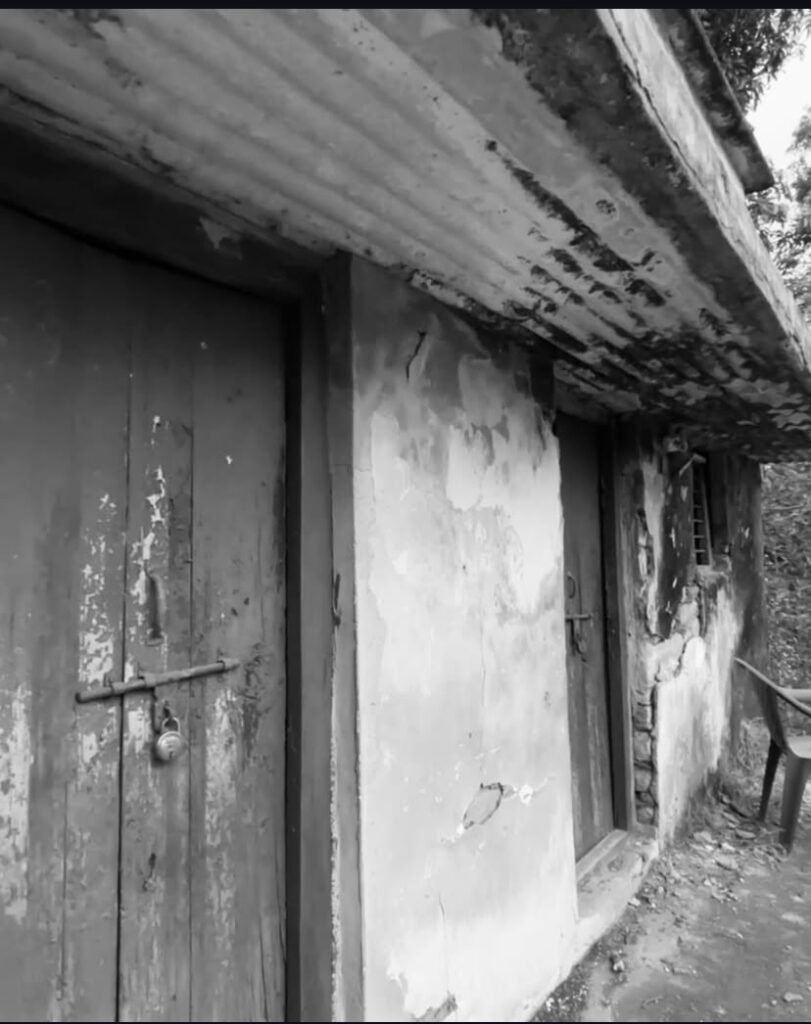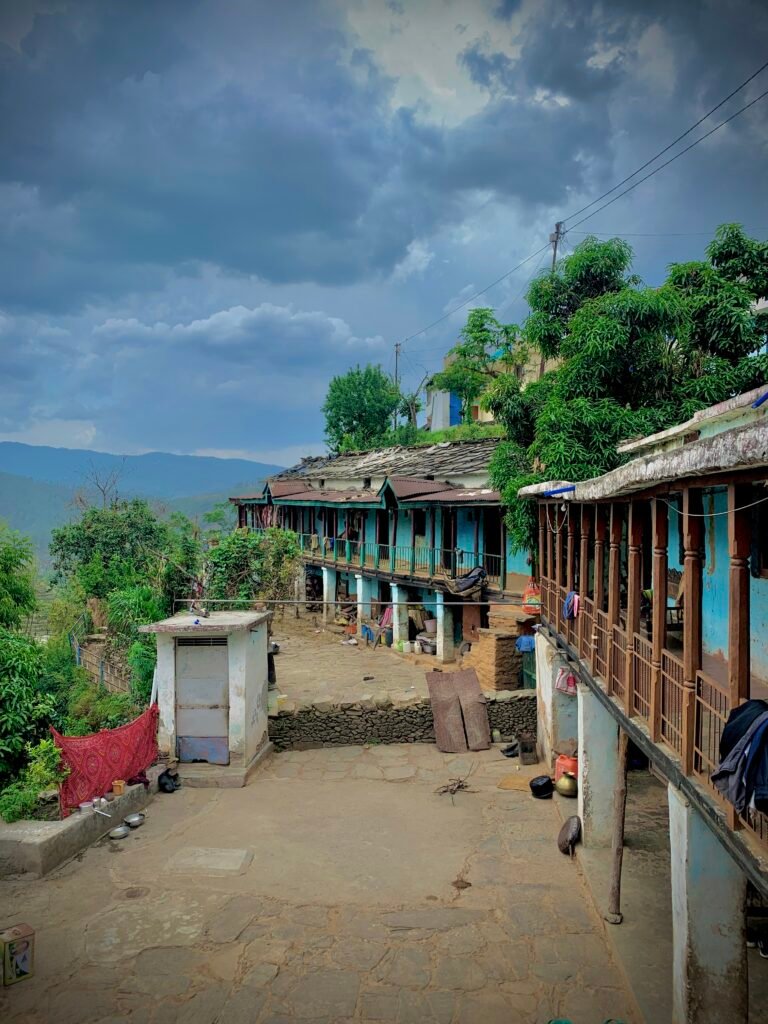Migration in uttarakhand When we think about Uttarakhand, the first images that come to mind are of snow-capped peaks, rivers tumbling down rocky paths, and villages surrounded by pine forests. For most tourists, the state looks like heaven on earth. But for those who belong to the mountains, there’s another side to the story — a silent crisis that has been unfolding for decades: migration, or as the locals call it, palayan.
This is not just about people moving for better jobs. It’s about entire villages slowly disappearing, leaving behind locked houses, overgrown fields, and elders waiting for children who may never return.

A Village Where Time Stands Still
Last year, while traveling in Pauri Garhwal, I decided to visit a small village about 6 km from the main road. The path was steep, the kind that makes you stop every few minutes to catch your breath. As I entered the village, I expected to hear the usual sounds — children laughing, women chatting while collecting water, the faint echo of a temple bell.
But the silence hit me harder than the climb. Most houses were locked, their doors covered with dust and cobwebs. The few that were open looked old and tired, their stone walls crumbling.
An old man sat on a wooden bench outside his house. His face carried the wrinkles of both age and loneliness. When I asked him about the village, he sighed and said, “Beta, pehle yahaan 50 ghar the. Ab sirf paanch parivaar bache hain. Baaki sab sheher chale gaye.”
That one line explained everything.
Why Are the Hills Emptying?
Life in the Himalayas looks poetic from a distance, but when you live here, reality is harsh. The reasons for migration are layered but interconnected.
- Jobs That Don’t Exist
Agriculture is the backbone of mountain life, but farming on steep, rocky slopes hardly provides enough food, let alone income. With no big industries or factories around, the youth are left with little choice but to move to Dehradun, Delhi, or other cities in search of work.
- Schools and Hospitals That Fail Families
Ask any parent in the hills why they left, and the most common answer is: “Bachchon ke liye.” Many villages have schools in name only. Teachers are absent, resources are minimal, and children often walk hours just to attend classes.
Healthcare is even more fragile. In an emergency, reaching a hospital could take half a day — and sometimes, people don’t make it. It’s no surprise that families choose to move closer to facilities.
- Roads That Break Every Monsoon
Connectivity is a constant struggle. Landslides and roadblocks cut villages off for days, sometimes weeks. Imagine living in fear that during a medical emergency, no vehicle will reach your home. The risk becomes unbearable, especially for families with young children or elderly members.
- The Wrath of Nature
Uttarakhand is breathtaking, but it is also fragile. Flash floods, cloudbursts, and landslides have destroyed crops and homes time and again. Climate change has made life even more uncertain. People ask themselves: “Why raise our children in such risk?”
The Ghost Villages of Uttarakhand
Today, Uttarakhand has over 1,700 ghost villages — places where either no one lives anymore or only a handful of elderly remain.
• In Chamoli, I saw a primary school with brand new furniture but no students. The government had spent money on the building, but the children had already left.
• In Almora, an old temple stood in silence. The bell rope was frayed, a reminder of the days when the entire village gathered there for evening prayers.
• In Tehri, wild grass had grown on farmlands where wheat once swayed. The silence of these fields was louder than any city noise.
Walking through such villages feels like walking through memory lanes where life once thrived but has now been frozen in time.

What Migration Takes Away
Migration is not just about leaving a house behind. It’s about leaving a whole identity behind.
• Festivals Fade: Villages once lit up with fairs, folk dances, and traditional songs. Now, many festivals are canceled because there aren’t enough people to celebrate.
• Lonely Elders: The elderly stay back, guarding homes and memories, waiting for their children who visit only once or twice a year.
• Vanishing Languages: Garhwali and Kumaoni are slowly losing ground, as the younger generation grows up in cities speaking Hindi and English.
• Culture at Risk: With people gone, who will pass on folk songs, rituals, and mountain crafts?
It’s as if the mountains are not just losing people, but also their soul.
Meanwhile, in the Cities…
While the villages empty out, the cities of Uttarakhand are choking. Dehradun, Haridwar, Haldwani, and Rishikesh are struggling with rapid, unplanned urbanization.
• Schools and hospitals are overflowing.
• Traffic jams have become common on once-quiet roads.
• Pollution is rising in towns that were once prized for their clean air.
This imbalance — dying villages and overcrowded cities — is creating a social and environmental crisis.
Government Efforts: Enough or Not?
The Uttarakhand government has recognized this issue and tried various measures.
• Organic Farming & Herbal Cultivation: Programs encourage people to grow high-value crops like millets, herbs, and apples.
• Rural Tourism & Homestays: Villagers are offered subsidies to start homestays for travelers.
• Skill Development: Training centers teach youth tailoring, handicrafts, and hospitality.
• Connectivity Push: Roads, bridges, and even internet projects are being expanded.
On paper, it sounds promising. On the ground, villagers often complain of delays, corruption, and poor execution. As one farmer in Almora told me, “Scheme toh aati hai, photo kheench kar chale jaate hain, par asli fayda humein kabhi nahi milta.”

Is Reverse Migration Possible?
Yes, and it is already happening in small pockets.
• In Munsiyari, some families have returned to run eco-tourism homestays. Tourists love staying in wooden houses, eating local food, and hearing folk stories.
• In Mukteshwar, organic farmers are selling apples, plums, and herbs across India.
• In Pithoragarh, local women have revived weaving and now sell handwoven shawls online.
These examples show that if opportunities exist, people will happily stay in their ancestral homes.
Standing in an Abandoned Courtyard
In Rudraprayag, I visited a village where barely five families remain. A wooden swing still hung from a tree in one courtyard. The swing creaked in the wind, as if still waiting for children who might return.
I stood there, imagining the village a decade ago — filled with laughter, with women singing folk songs during harvest, with men returning from the forest with wood. That picture clashed painfully with the silence in front of me.
The truth is: the hills are bleeding people, and the scars are everywhere.
What the Future Demands
If Uttarakhand wants to save its villages, it needs more than temporary fixes.
• Schools with good teachers, not just buildings.
• Hospitals with doctors, not just empty rooms.
• Real markets for local products, not just slogans.
• Roads and internet that connect villages to the world.
• And above all, respect for the dignity of mountain life.
Development doesn’t mean turning villages into cities. It means making them livable with modern facilities while preserving their natural beauty and culture.
Conclusion
The migration crisis of Uttarakhand is not just about economics; it’s about identity, culture, and the soul of the mountains. Every locked house tells a story of dreams left behind. Every abandoned field whispers of traditions lost.
But the story doesn’t have to end this way. With the right policies, honest implementation, and community-driven efforts, the villages of Uttarakhand can be brought back to life. Imagine festivals alive again, temple bells ringing, children’s laughter echoing across valleys.
Until then, the mountains will continue to stand tall but lonely, carrying the silence of migration — a silence that should wake us all.
MIGRATION : Band tale ab bhi rah takte h shayad apna koi laut aae….

